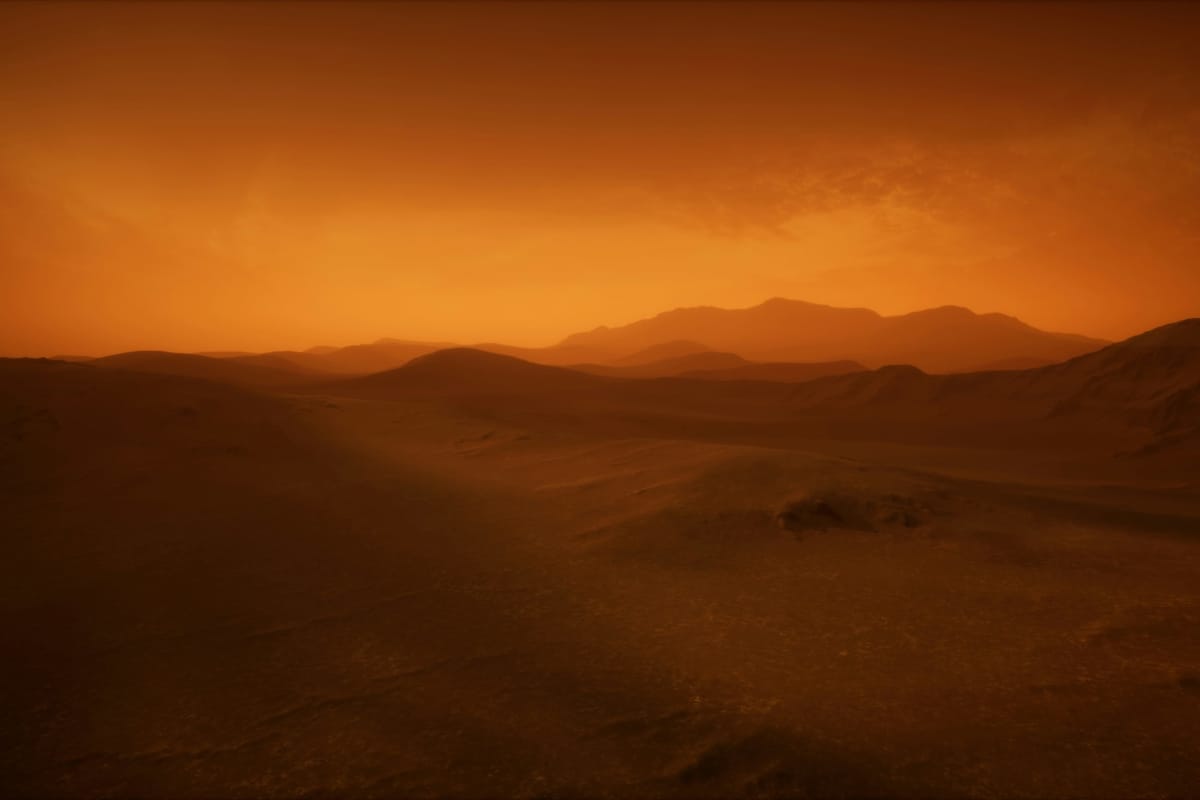New evidence that Mars was Earth-like
Recent scientific discoveries have provided compelling evidence that ancient Mars may have had an environment similar to Earth, with conditions that could have been conducive to the emergence of life.

Recent scientific discoveries have provided compelling evidence that ancient Mars may have had an environment similar to Earth, with conditions that could have been conducive to the emergence of life. These findings come from various studies and observations made by NASA's Curiosity rover and other missions exploring the Martian surface.
Cyclical Climate Similar to Earth
Research conducted by scientists from CNRS, Université Toulouse III – Paul Sabatier, and Université Claude Bernard Lyon 1, using data from NASA's Curiosity rover, revealed patterns on Mars that suggest a cyclical climate with wet and dry seasons, akin to those on Earth[2]. This cyclical climate, evidenced by the discovery of hexagonal salt patterns in sedimentary layers, indicates that Mars experienced sustained, regular climate changes over millions of years, which could have supported the formation of complex organic compounds necessary for life[2].
Evidence of Wet-Dry Cycles
Further supporting the notion of an Earth-like Martian climate, a study published in Nature examined ancient mud cracks found by Curiosity, which were likely formed by high-frequency wet-dry cycles[3]. These cycles are crucial as they facilitate the molecular evolution that could lead to life, suggesting that Mars had an "Earth-like climate regime" favorable to prebiotic evolution[3].
Manganese Oxide Deposits
Another intriguing discovery involves high concentrations of manganese oxide found in the rocks at Gale Crater, a site believed to have once been a lake[5][6][7]. On Earth, manganese oxide forms in the presence of high oxygen levels, typically facilitated by photosynthetic life. The presence of these oxides on Mars raises questions about the Martian atmosphere's oxygen content and whether conditions might have once supported life[5][6][7].
Ice-Rich Deposits
The Mars Express mission has also contributed to our understanding of Mars' past environment by identifying ice-rich layered deposits in the Medusae Fossae Formation[4]. These deposits suggest that significant amounts of water were present on Mars, further hinting at habitable conditions in the planet's history[4].
Implications for Life
These findings collectively suggest that ancient Mars had a climate and environmental conditions that were remarkably similar to Earth, with the potential for supporting life. The cyclical climate, presence of water, and chemical conditions favorable for the formation of life's building blocks all point to a Mars that might have been habitable billions of years ago. This not only deepens our understanding of Mars' geological and climatic history but also expands the scope of our search for life beyond Earth[2][3][4][5][6][7].
Citations:
[1] https://weather.com/science/space/video/new-evidence-that-ancient-mars-may-have-looked-like-earth
[2] https://www.cnrs.fr/en/press/mars-new-evidence-environment-conducive-emergence-life
[3] https://nypost.com/2023/08/19/possible-new-evidence-of-life-on-mars-discovered/
[4] https://www.sci.news/space/mars-express-ice-rich-layered-deposits-medusae-fossae-12621.html
[5] https://gigazine.net/gsc_news/en/20240502-ancient-mars-earth-like-environment-manganese/
[6] https://www.earth.com/news/manganese-discovery-ancient-mars-earth-like-water-lake-habitable/
[7] https://www.iflscience.com/new-evidence-ancient-mars-was-more-earth-like-than-thought-and-maybe-even-habitable-74044
[8] https://www.livescience.com/space/mars/nasa-mars-samples-which-could-contain-evidence-of-life-will-not-return-to-earth-as-initially-planned